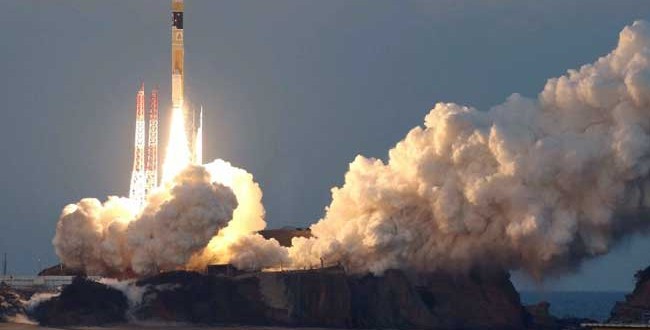A Japanese rocket carrying the astronomy observation satellite ‘Hitomi’ launched from the Tanegashima Space Center in southern Japan on Wednesday. The satellite, also known as ‘ASTRO-H’ of the Japan Aerospace Exploration Agency (JAXA), is designed to detect a wide range of wavelengths, such as X-rays and gamma rays. Hitomi is to study the structure and evolution of the universe, as well as the formation and evolution of black holes.
The observatory will be the eye to the cosmic energy rays that permeate the universe, which is why ASTRO-H has been named “Hitomi” (“eye”), according to JAXA. “We wish ASTRO-H to be the essential mission to solve mysteries of the universe in X-rays. Hitomi refers to the aperture of the eye, the part where incoming light is absorbed,” JAXA wrote in a statement. “From this, Hitomi reminds us of a black hole. We will observe Hitomi in the Universe using the Hitomi satellite!”
ASTRO-H was launched within the H-IIA Launch Vehicle No. 30 from the Tanegashima Space Center at 5:45 p.m. JST (3:45 a.m. EST) Wednesday.
ASTRO-H separated from the vehicle at 14 minutes and 15 seconds after liftoff. After the launch, the space agency confirmed the X-ray satellite deployed its solar array panels and is in good health. JAXA will provide an update on the orbit of ASTRO-H Thursday. ASTRO-H is the successor to Suzaku, JAXA’s X-ray observatory that launched in 2005.
The satellite is equipped with four instruments to observe “soft” X-rays and “soft” gamma rays that emit hundreds to hundreds of thousands of times the energy of visible light, according to NASA. X-rays are given off by high energy objects in the universe such as matter falling into a black hole or the strong gravitational pull of a group of galaxies.
“These energies arise in a variety of settings, including stellar explosions, extreme magnetic fields, or strong gravity, and X-rays let us probe aspects of these phenomena that are inaccessible by instruments observing at other wavelengths,” Robert Petre, chief of Goddard Space Flight Center’s X-ray Astrophysics Laboratory and the U.S. project scientist for ASTRO-H, said in a statement.
Agencies/Canadajournal
 Canada Journal – News of the World Articles and videos to bring you the biggest Canadian news stories from across the country every day
Canada Journal – News of the World Articles and videos to bring you the biggest Canadian news stories from across the country every day



